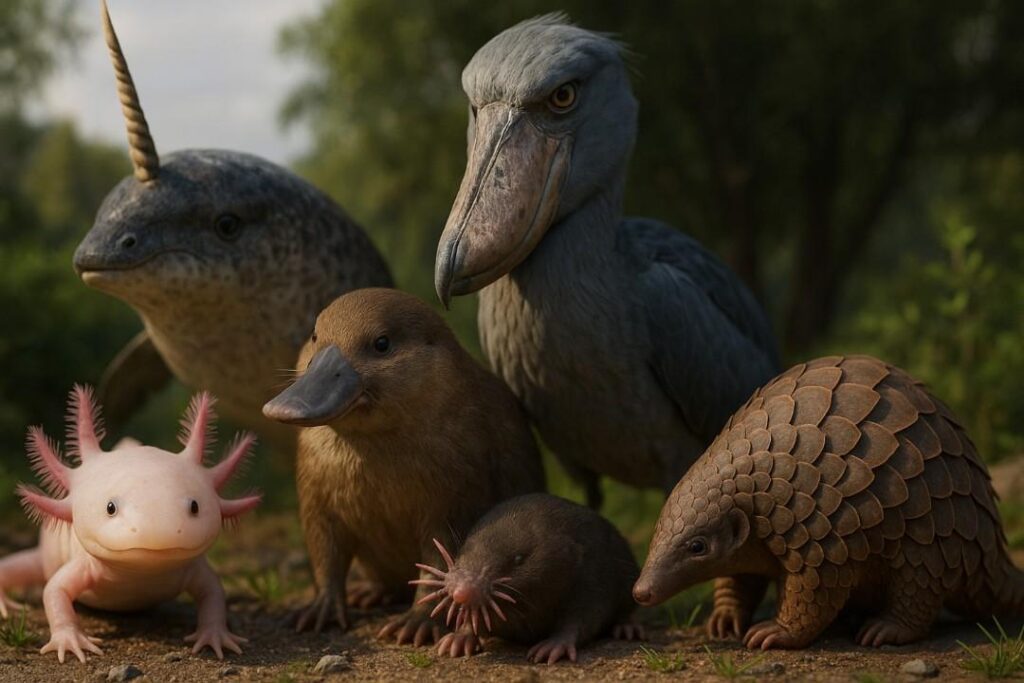Across the globe, evolution has given rise to an astonishing array of animals with bizarre traits and adaptations. Some creatures have developed peculiar body shapes, unique survival strategies, or completely unexpected features, making them stand out in the animal kingdom. Their strange appearances and behaviors are the results of millions of years of evolution, shaped by harsh environments and the need to survive. Here are fifteen of the weirdest evolutionary marvels in the animal world.
1. Axolotl
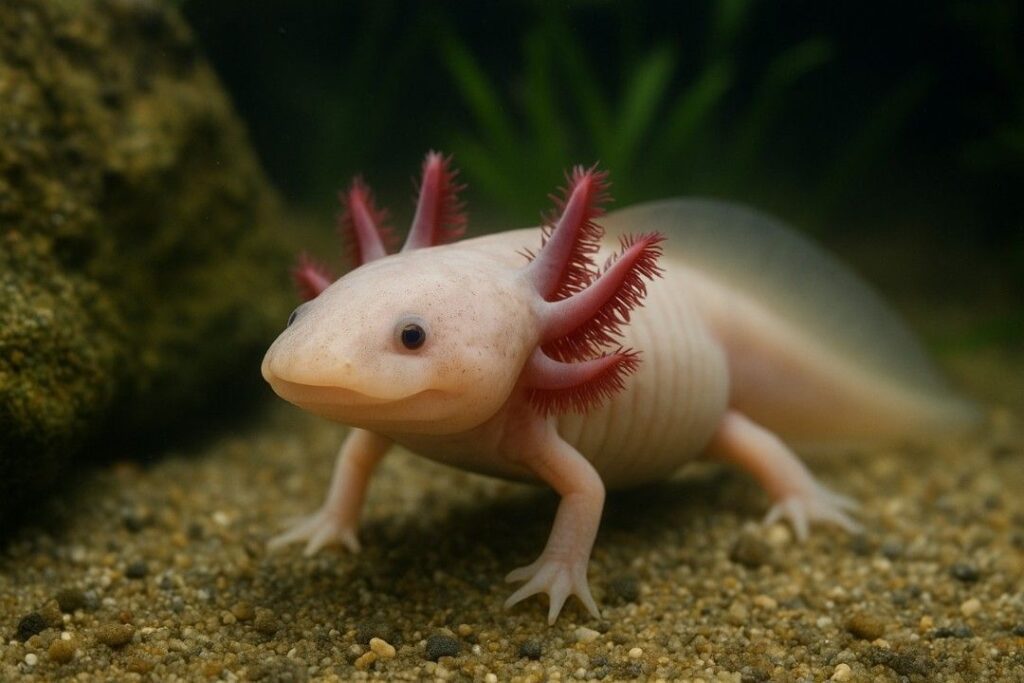
The axolotl, also known as the Mexican walking fish, is famous for its ability to regenerate entire limbs, spinal cords, and even parts of its brain. Unlike most amphibians, axolotls never undergo full metamorphosis—they remain in their aquatic larval form for life, a phenomenon known as neoteny. This adaptation allows them to exploit a unique niche in Mexican lake habitats, but it also makes them highly vulnerable to environmental changes.
2. Platypus
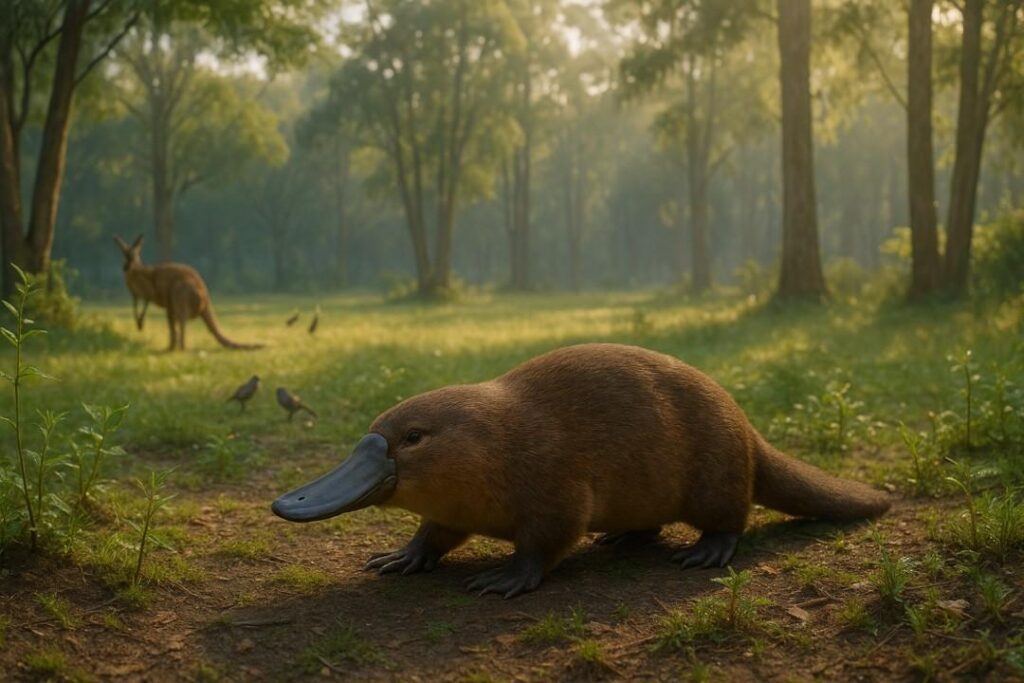
The platypus looks like it was stitched together from spare animal parts, sporting a duck bill, webbed feet, and a beaver-like tail. Native to Australia, it’s one of only a few mammals that lay eggs instead of giving birth to live young. Male platypuses are also venomous, delivering painful stings with their hind legs—an odd trait for mammals. Their unique adaptations confuse even scientists today.
3. Naked Mole Rat

Naked mole rats defy the rules of mammalian biology in many ways. They are nearly hairless, cold-blooded, and highly resistant to cancer and pain. Living in eusocial colonies like ants or bees, only a single queen breeds while the rest work as laborers. Their evolutionary quirks help them survive underground in harsh, low-oxygen environments across East Africa.
4. Leafy Sea Dragon
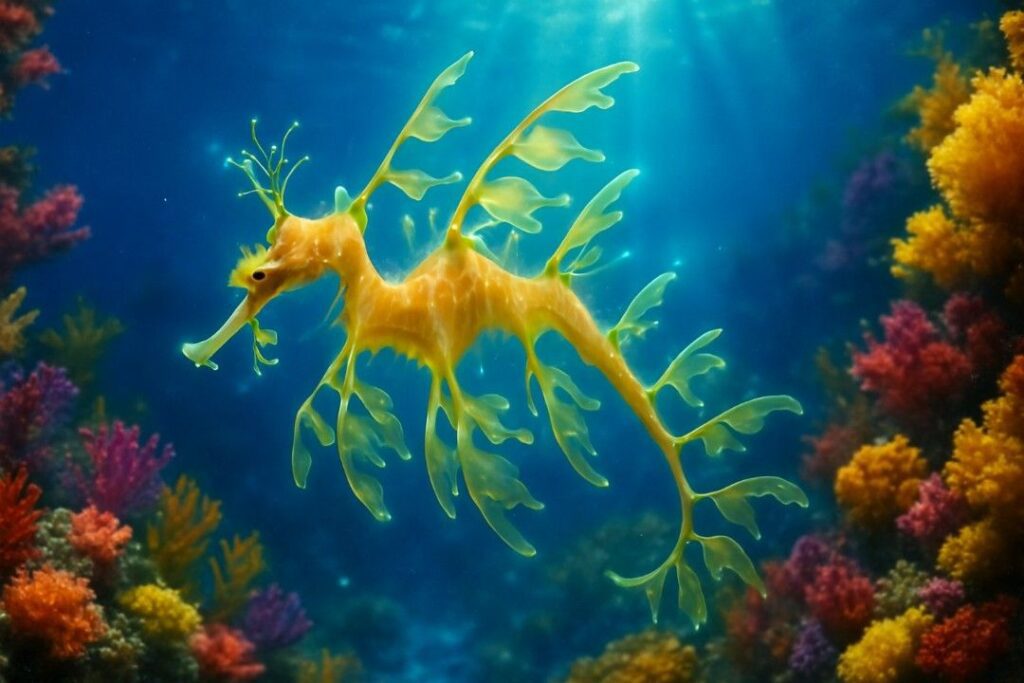
Looking more like floating seaweed than a fish, the leafy sea dragon relies on elaborate camouflage to evade predators. Native to Australian coastal waters, this relative of the seahorse has leaf-like appendages all over its body, making it almost invisible among kelp and seagrass. Their dramatic appearance evolved purely for survival, as they have no natural defense other than blending in.
5. Kakapo
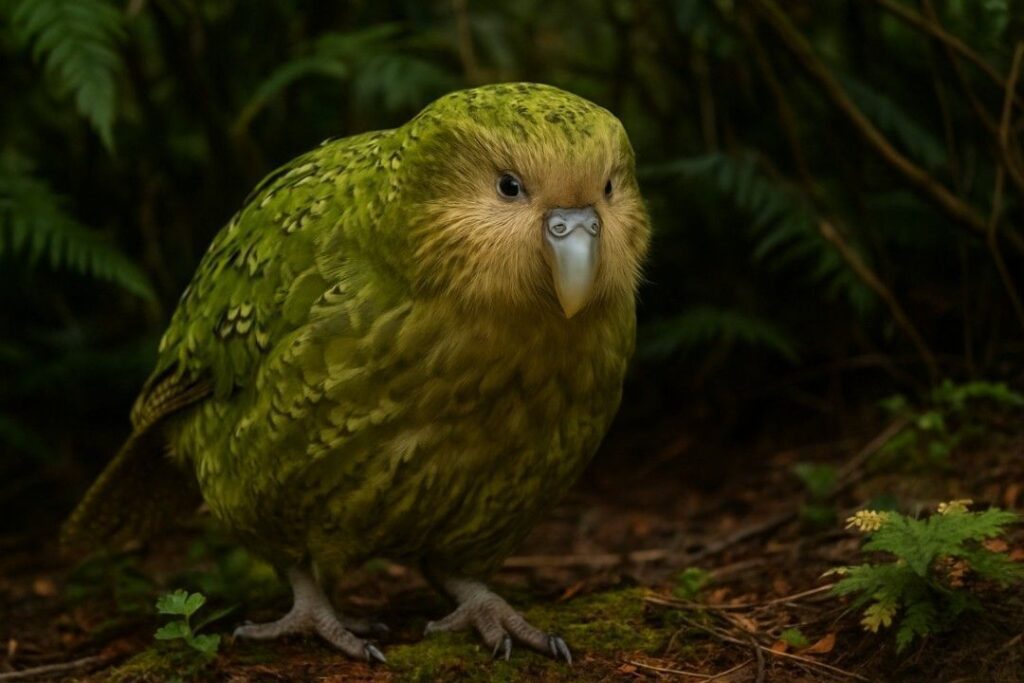
The kakapo, or “owl parrot,” is the world’s only flightless parrot. Native to New Zealand, this nocturnal bird has evolved a large, heavy body and uses its wings for balance rather than flight. Its unique evolution was shaped by the absence of mammalian predators, though it has become highly endangered since the arrival of humans and introduced animals.
6. Star-Nosed Mole
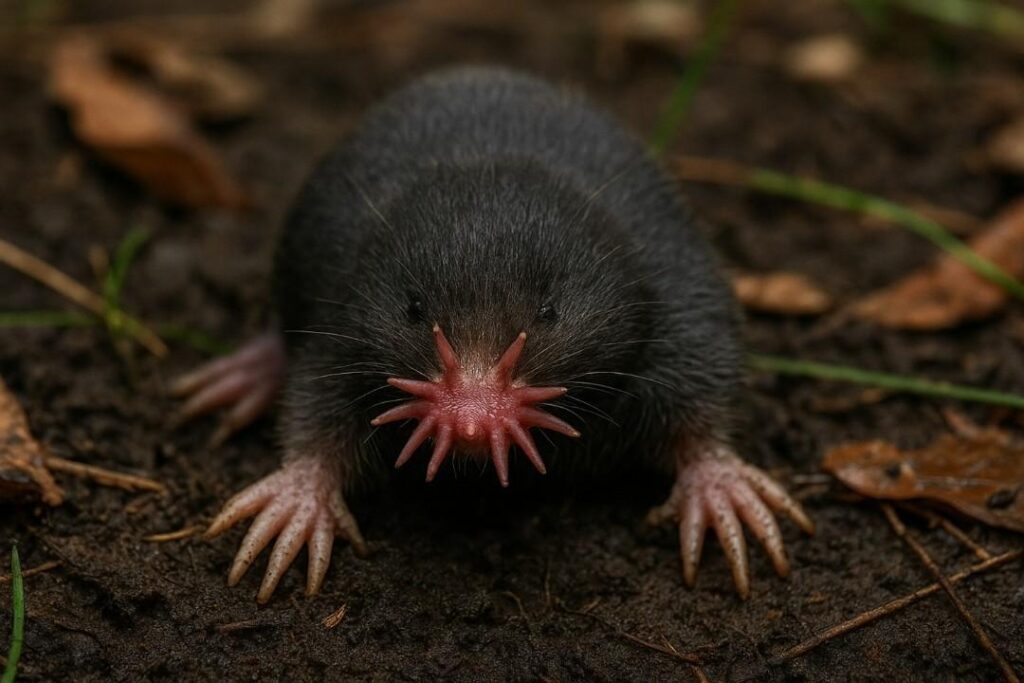
With 22 fleshy appendages radiating from its snout, the star-nosed mole is one of the fastest eaters in the animal kingdom, able to identify and consume prey in less than a quarter of a second. These star-shaped tentacles are covered with thousands of sensory receptors, allowing the mole to “see” and navigate in total darkness underground—a striking example of sensory evolution.
7. Saiga Antelope
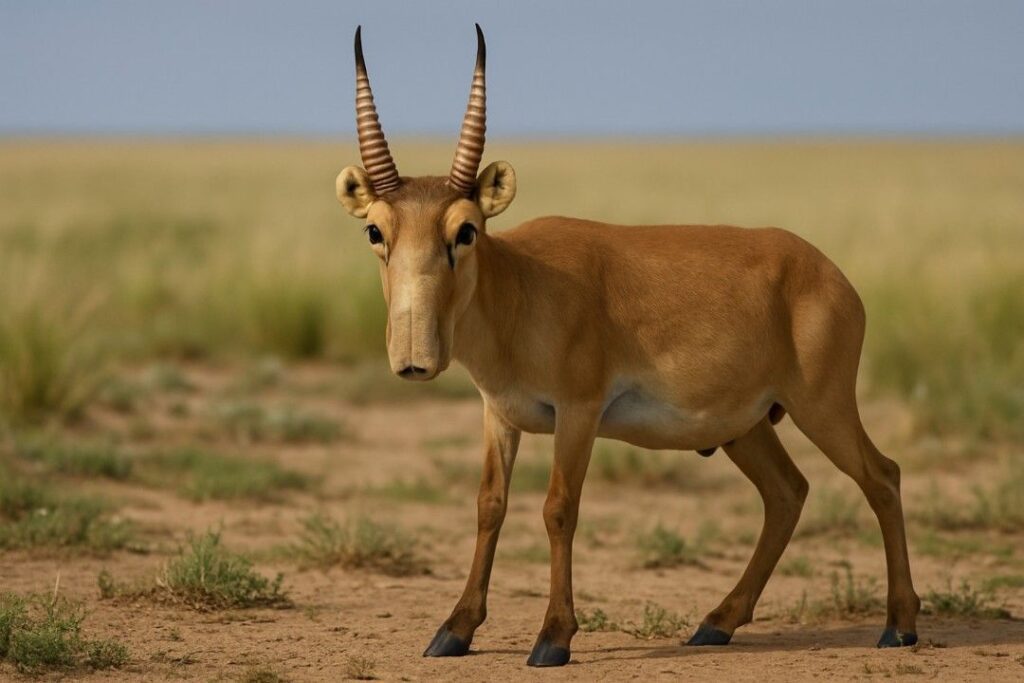
The saiga antelope of Central Asia is instantly recognizable by its oversized, bulbous nose. This strange snout acts as an air filter, warming and cleaning dust-laden air during migration and protecting the saiga from respiratory illnesses. The saiga’s evolutionary adaptations are essential for survival in harsh, open steppes, but poaching and habitat loss have made them critically endangered.
8. Anglerfish
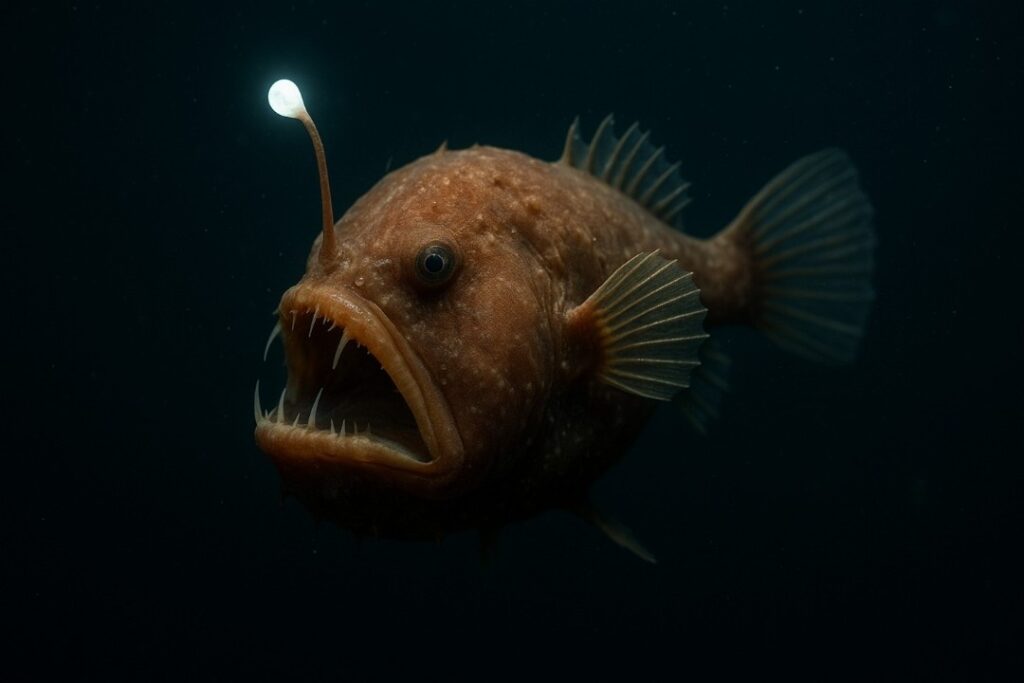
The deep-sea anglerfish is the stuff of nightmares, equipped with a bioluminescent lure dangling from its head to attract prey in total darkness. In some species, tiny males fuse permanently to much larger females, essentially becoming reproductive parasites. Their bizarre reproductive and feeding adaptations help them thrive in the inhospitable depths of the ocean.
9. Narwhal
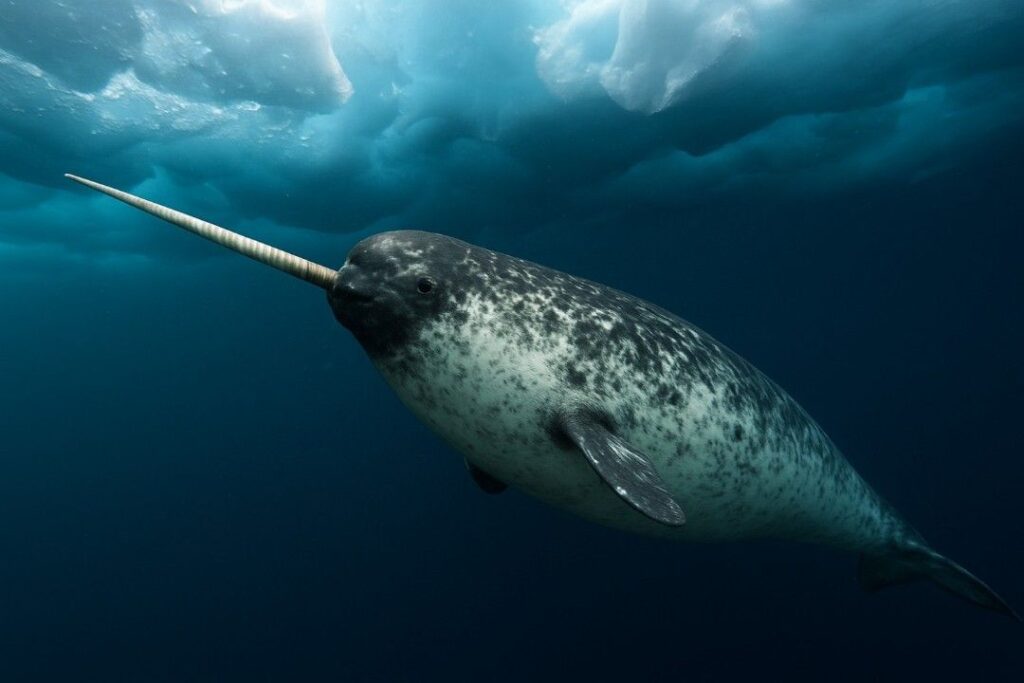
Often called the “unicorn of the sea,” the narwhal’s most distinguishing feature is its long, spiral tusk—actually an enlarged tooth that can grow up to ten feet long. Scientists believe this tusk is used for display, sensing the environment, or breaking through ice. Narwhals are a perfect example of how sexual selection and environmental pressures can drive unusual evolutionary traits.
10. Shoebill Stork
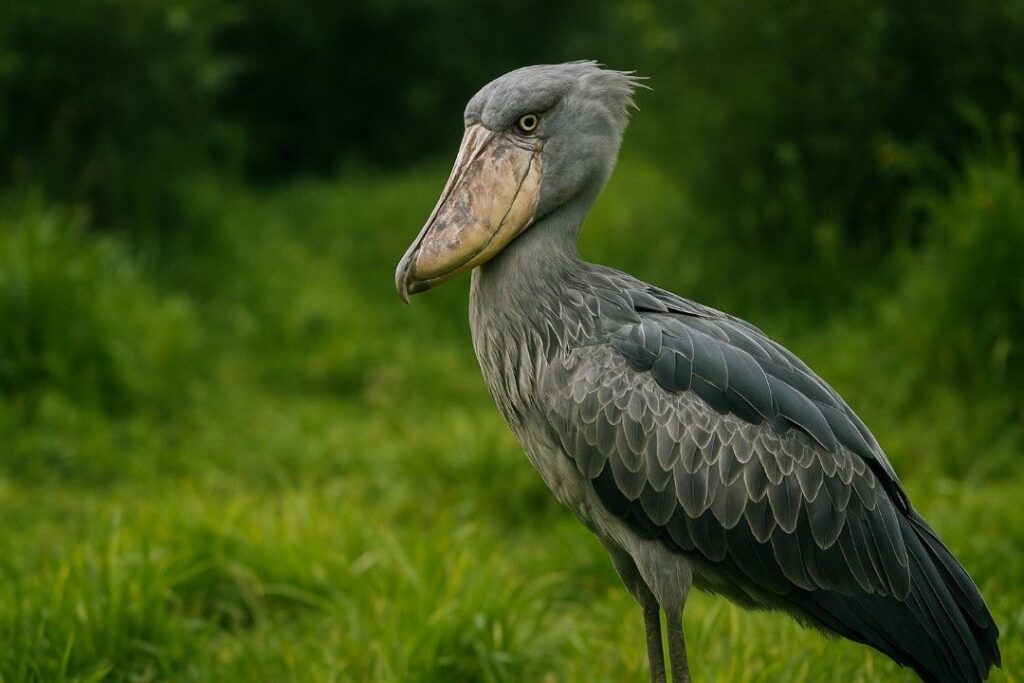
The shoebill stork looks like a prehistoric throwback with its massive, shoe-shaped bill and steely gaze. Native to East Africa’s swamps, its enormous beak is perfectly adapted to catching large prey, such as lungfish and even baby crocodiles. Its strange appearance and hunting technique set it apart from all other wading birds.
11. Komodo Dragon
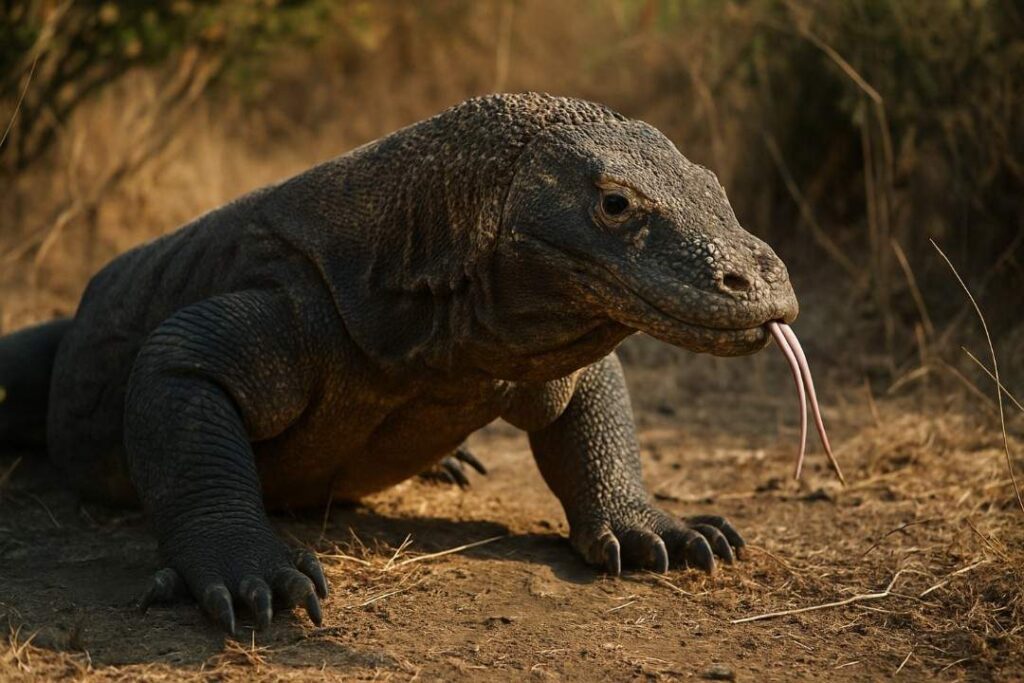
As the largest living lizard, the Komodo dragon evolved venom glands that can deliver anticoagulants, weakening its prey and making them easier to subdue. Found only on a handful of Indonesian islands, these reptiles have adapted to hunt everything from birds to water buffalo, relying on a combination of stealth, power, and chemical warfare.
12. Tuatara
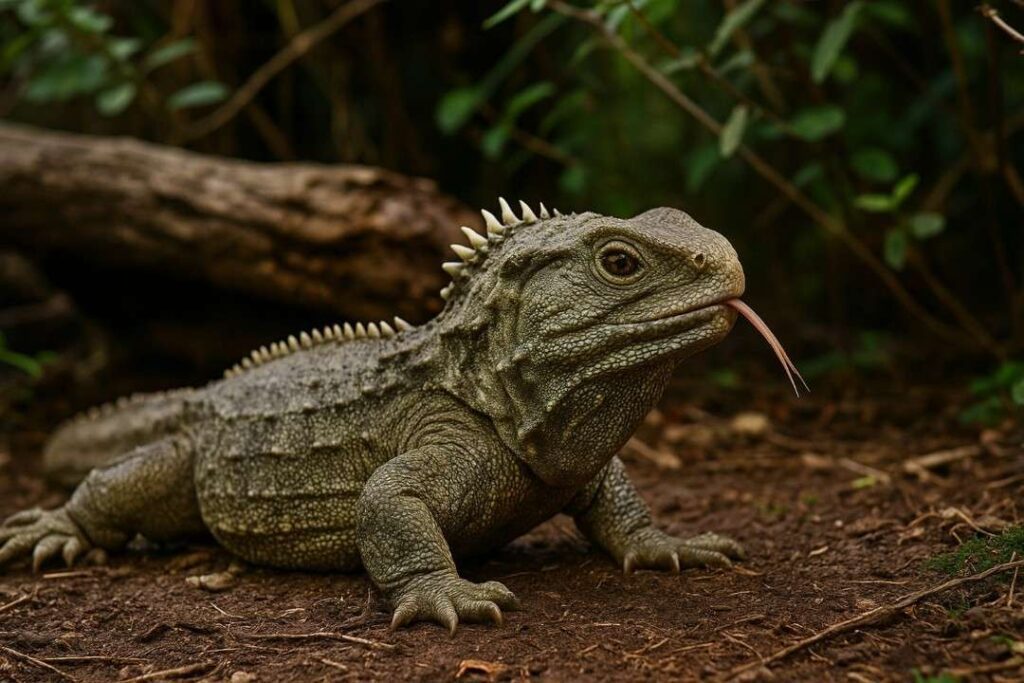
The tuatara, native to New Zealand, is the last surviving member of an ancient order of reptiles that thrived alongside the dinosaurs. It sports a “third eye” on top of its head—an organ used for sensing light. Unlike other reptiles, tuataras have exceptionally slow metabolisms and can live over 100 years, a testament to their unique evolutionary lineage.
13. Maned Wolf

Despite its name, the maned wolf isn’t a true wolf but the only species in its genus. Its long legs and reddish fur help it see above tall South American grasses while hunting. The maned wolf’s fox-like appearance and strong-smelling urine, used for territory marking, set it apart from other wild canids.
14. Glass Frog
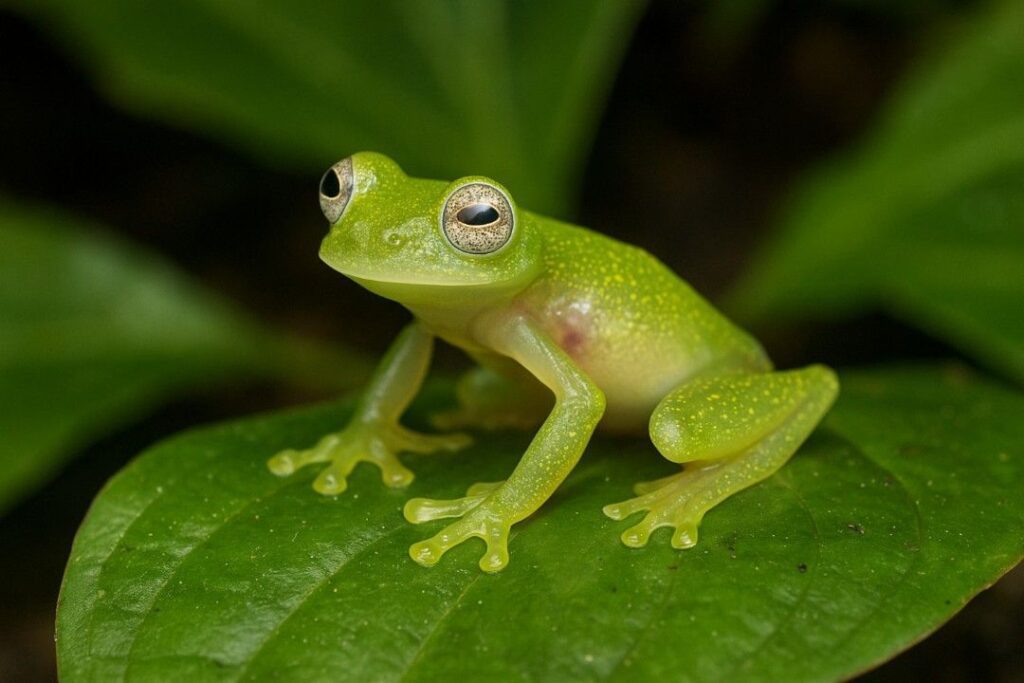
Glass frogs of Central and South America have translucent skin on their bellies, revealing their internal organs. This see-through adaptation helps them blend into leafy backgrounds, making it harder for predators to spot them. Their unique camouflage is an extraordinary example of how evolution can shape both form and function for survival.
15. Pangolin
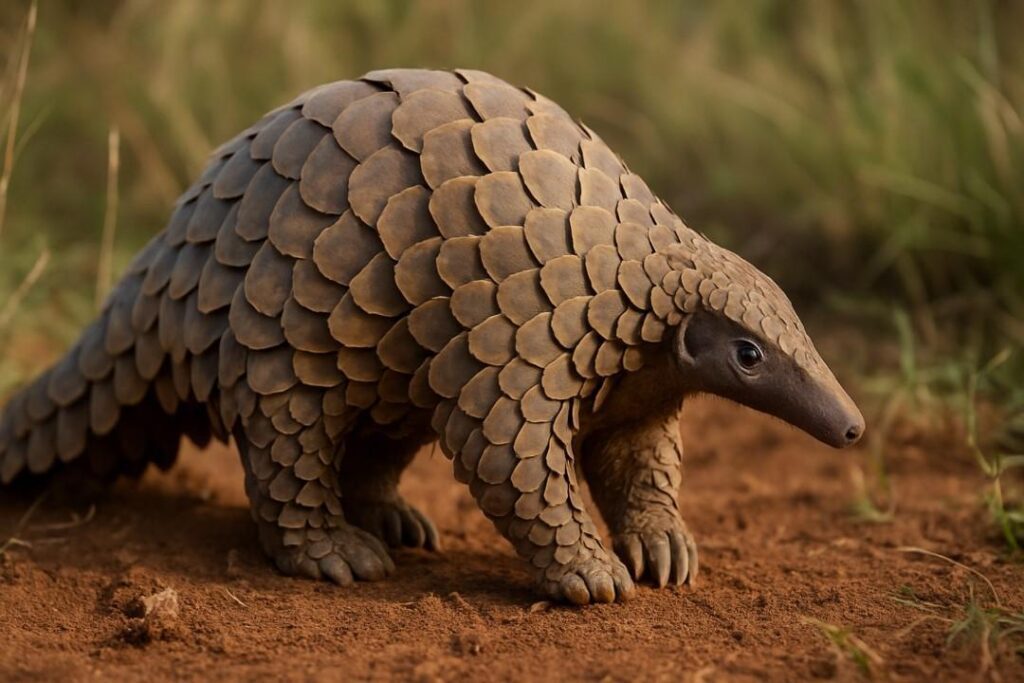
Covered in tough, overlapping scales made of keratin, the pangolin is the world’s only truly scaly mammal. When feeling threatened, it rolls into a ball, depending on its armor for safety. Pangolins’ long, sticky tongues and strong claws are perfect for harvesting ants and termites, but sadly, their scales have also made them the most trafficked mammals on the planet.

